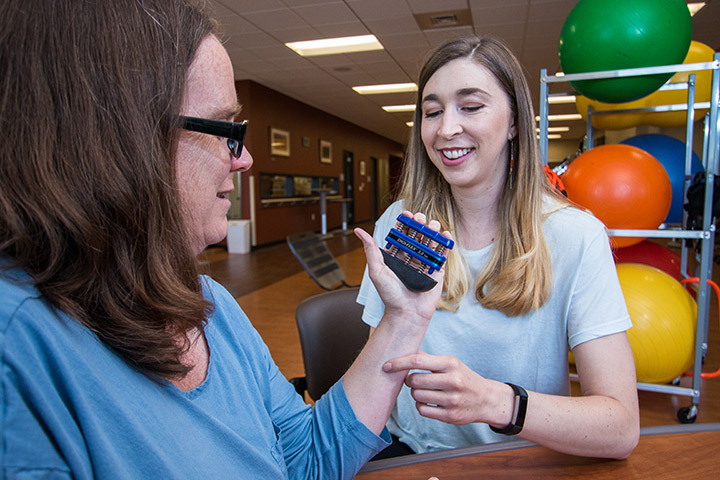What is Occupational Therapy? Answering the six Q’s-what, why, who, when, where and how-about occupational therapy.
WHAT IS OCCUPATIONAL THERAPY?
Your life is made up of occupations—meaningful everyday activities. These occupations can include many roles, such as being a parent, a friend, a spouse, a tennis player, an artist, a cook, or a musician. We generally don’t think about our daily occupations until we have trouble doing them. Everyone has occupations— from the toddler whose occupations are play and learning to develop important skills, to the older adult whose occupations are engaging with family and friends and managing his or her home. If you are recovering from an accident or injury, your valued occupations may be disrupted. Occupational therapy incorporates your valued occupations into the rehabilitation process
WHO ARE OCCUPATIONAL THERAPY PRACTITIONERS?
Occupational therapy practitioners are either occupational therapists or occupational therapy assistants. They are skilled health care professionals who use research and scientific evidence to ensure their interventions are effective. With strong knowledge of a person’s psychological, physical, emotional, and social makeup, occupational therapy practitioners can evaluate how your condition (or risk for one) is affecting your body and mind, using a holistic perspective.
WHEN DO I NEED OCCUPATIONAL THERAPY?
Have you or a family member ever been diagnosed with a new health condition and found yourself asking, “now what?” Maybe you have a child with autism who is having trouble succeeding in school, or an aging parent who wants to remain at home, but you’re worried about safety issues, or you are experiencing depression and having trouble doing everyday activities. Occupational therapy can help you answer that “now what?” question. An occupational therapy practitioner will keep the focus on the things you need and want to do—your goals, your activities, your independence. With occupational therapy services you can:
- Achieve goals, such as helping your teenager with a developmental disability gain the skills to transition from high school to independent living as an adult.
- Stay as healthy and productive as possible, while managing a chronic medical condition.
- Maintain or rebuild your independence, such as using assistive devices so you can care for yourself after a stroke.
- Participate in the everyday activities important to you, such as driving, visiting friends, going to church, and other activities that keep you involved with your community. In short, an occupational therapy practitioner can help you live life to its fullest no matter your health condition, disability, or risk factors.
WHY WOULD I NEED OCCUPATIONAL THERAPY?
Imagine if an accident, injury, disease, or condition made it difficult for you to participate in your daily
activities. A wrist injury means that getting dressed in the morning is painful. Arthritis makes driving challenging. Autism may hinder a child from interacting effectively with classmates. A traumatic brain injury keeps a wounded warrior out of active duty because of difficulties with memory and organizational skills. Or a small change in your activities or the environment could prevent a future condition (such as using ergonomics at work to avoid injury). Occupational therapy allows people across the lifespan to do the activities they want and need to do. An occupational therapist will evaluate your situation and, with input from you (and perhaps your family, care provider, or friend), develop individualized goals that allow you to resume or pursue your valued occupations. After you develop goals with your occupational therapist, you will work together on a specific intervention plan to help improve or maintain your ability to perform daily activities and reach your goals getting back to your life. Occupational therapy practitioners can widen their focus to groups or communities too, developing and implementing programs that promote healthy behaviors, or address particular issues such as older driving, community transitions for returning soldiers, homelessness, troubled youth, mental health, and addictions
HOW DO I SCHEDULE AN OCCUPATIONAL THERAPY VISIT?
Ask your physician about a referral for occupational therapy services or look for a private practice in your community. Talk to your child’s teacher about occupational therapy services at school.
For more information, visit www.aota.org.
Reference
1What Is OT Brochure? – What Is Occupational Therapy? https://www.aota.org/-/media/Corporate/Files/Practice/Manage/Presentation-Resources/Brochure/What-Is-OT-brochure.pdf.

